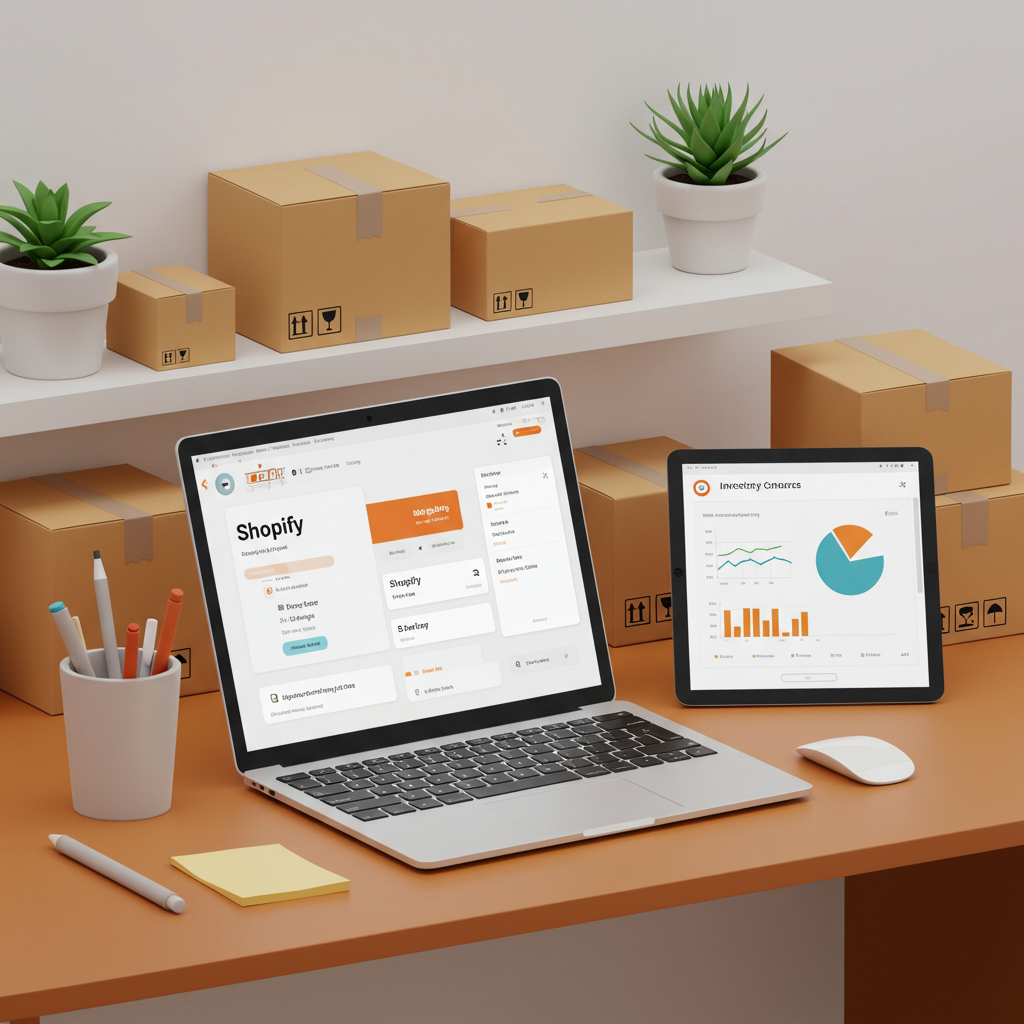Streamlining Your E-commerce Operations for Growth
As a Shopify merchant, I quickly learned that managing inventory isn’t just about counting boxes. It’s the backbone of your entire operation, directly impacting customer satisfaction, cash flow, and ultimately, your profitability.
Early on, I tried to manage everything manually, relying on spreadsheets and my memory. It was a nightmare, especially as my product catalog grew and orders started pouring in.
I faced constant challenges: overselling products that were out of stock, missing out on sales due to unexpected stockouts, and spending countless hours trying to reconcile discrepancies.
This led me down a rabbit hole of research, exploring how other successful merchants handled their stock. The consensus was clear: dedicated inventory management apps were essential.
These tools promised to automate tedious tasks, provide real-time insights, and prevent costly errors. So, I decided to embark on a mission to review some of the best options available on the Shopify App Store.
Before diving into specific apps, I established a set of crucial features I believed any robust inventory solution should offer. This helped me filter through the noise.
**Real-time Syncing:** This was non-negotiable. I needed to know my stock levels were accurate across all sales channels, instantly. No more manual updates or delayed information.
**Multi-location Support:** If you store products in multiple warehouses, retail stores, or even a dropshipper’s location, the app must handle this seamlessly. My business was expanding, and this became vital.
**Bundling and Kitting:** For merchants selling product bundles or creating kits from individual components, the app should automatically adjust inventory for all constituent items when a bundle is sold.
**Purchase Order Management:** Generating, tracking, and receiving purchase orders directly within the app saves immense time and helps forecast future stock needs accurately.
**Reporting and Analytics:** Beyond just numbers, I wanted actionable insights. Which products are selling fast? Which are slow-moving? What are my reorder points?
**Automation:** Low-stock alerts, automated reordering suggestions, and even automated stock adjustments based on sales or returns were high on my wish list.
**Integrations:** My tech stack includes accounting software, shipping platforms, and sometimes a POS system. The inventory app needed to play nicely with these existing tools.
**User-friendliness:** A powerful app is useless if it’s too complex to navigate. I looked for intuitive interfaces and clear workflows.
**Scalability:** As my business grows, I don’t want to switch systems again. The app needed to be able to handle increased volume and complexity.
Let’s talk about some of the apps I explored and what I found. Keep in mind, the “best” app truly depends on your specific business needs.
**Stock Sync:** This app is fantastic if your primary need is to synchronize inventory across multiple sales channels or suppliers. It’s highly configurable for importing and exporting data.
I found Stock Sync particularly useful for managing my dropshipping products alongside my own stocked items, ensuring consistent stock levels everywhere.
**Katana MRP:** If you’re a merchant who manufactures your own products, Katana MRP (Manufacturing Resource Planning) is a game-changer. It goes beyond simple inventory to manage raw materials, production orders, and shop floor control.
While it was overkill for my current needs, I was impressed by its ability to track every component and stage of the manufacturing process, providing a clear overview of production costs and timelines.
**QuickBooks Commerce (formerly TradeGecko):** This is a comprehensive solution, often favored by growing businesses with B2B operations. It offers robust inventory management, order fulfillment, and even CRM capabilities.
I appreciated its detailed reporting and multi-currency support, which is crucial for international sales. It’s a powerful system, but it comes with a higher price point and a steeper learning curve.
**SKULabs:** For merchants with a dedicated warehouse or those focused on efficient picking, packing, and shipping, SKULabs stands out. It integrates barcode scanning and streamlines the fulfillment process.
While I don’t have a large warehouse operation yet, I could see the immense value in its accuracy and speed for high-volume businesses. It’s very much focused on the operational side of inventory.
**Shopify’s Native Inventory:** It’s important to acknowledge that Shopify itself offers basic inventory tracking. You can set stock levels, track incoming inventory, and manage multiple locations.
However, for anything beyond simple tracking, like advanced reporting, bundling, or complex purchase order management, you’ll quickly hit its limitations. That’s where these third-party apps become indispensable.
So, how do you choose the right app for *your* business? My advice is to start by clearly defining your current pain points and future growth plans.
Are you struggling with stockouts, overselling, or inefficient order fulfillment? Do you plan to expand to new sales channels or introduce manufacturing?
Most of these apps offer free trials. Take advantage of them! Test the core features with your actual product data to see if it fits your workflow.
Read recent reviews on the Shopify App Store, but also look for case studies or testimonials from businesses similar to yours.
Investing in the right inventory management app isn’t just an expense; it’s an investment in your business’s efficiency and profitability.
A well-managed inventory leads to reduced carrying costs, improved cash flow, and fewer disappointed customers. It frees up your time to focus on growth, marketing, and product development.
I’ve personally experienced the transformation from chaotic spreadsheets to a streamlined, data-driven inventory system, and it’s been incredibly liberating.
It allows me to make informed decisions, optimize my purchasing, and ultimately, provide a much better experience for my customers.
What do you think about this article? Have you used any of these apps, or do you have other recommendations? I’d love to hear your thoughts.






